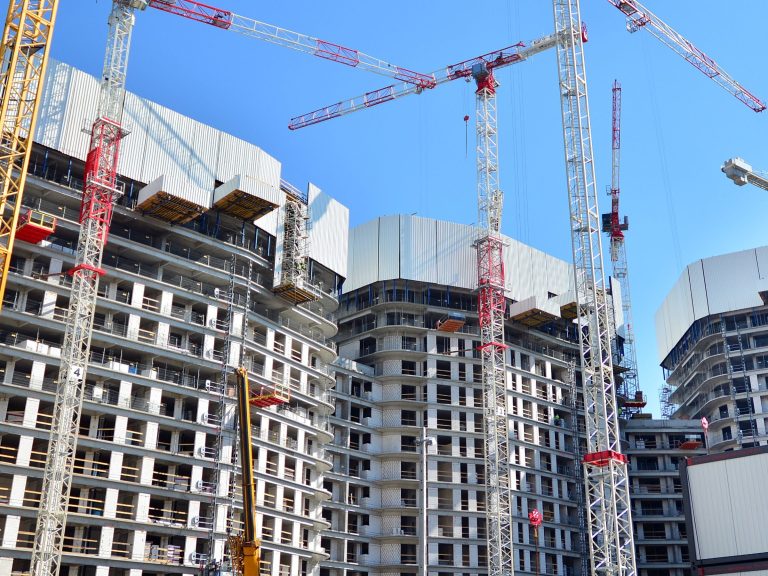The unpaid debt of the construction industry exceeded PLN 4.7 billion

The total unpaid debt of the construction industry increased by PLN 246 million and exceeded PLN 4.7 billion at the end of the first half of 2018, according to the report “Financial situation of construction enterprises. Unstable condition of the industry at the peak of the economic situation”, prepared by BIG InfoMonitor and BIK, in cooperation with the Polish Association of Construction Employers. During the first half of the year, the number of companies with problems in paying loan installments and invoices increased by 5.5 thousand.
A total of 40,913 enterprises, i.e. 5.9%, have problems with paying their liabilities on time. from the pool of operating, suspended and closed companies engaged in construction activities and included in the KRS and CEIDG databases. There are 5.5 thousand more debtors. more than at the end of 2017, it was reported.
– The share of construction company debtors is slightly below the average for the entire economy, where the percentage of indebted companies reaches 6.1%. The situation of construction is better than that of transport, mining, waste management and the hotel and catering industry, but also worse than many others. The significant role of construction in the economy and, consequently, the large number of companies engaged in this activity mean that the number of unreliable payers, although it does not exceed 6%, still applies to a huge number of enterprises – said Sławomir Grzelczak, president of BIG InfoMonitor, quoted in message.
Small businesses have it harder
During the first half of this year, the total debt of construction companies overdue by more than 30 days increased by nearly PLN 246 million (5.5%). Mainly smaller entities contributed to this. The arrears of companies run by natural persons and civil partnerships increased by 11.9 percent, and the arrears of larger companies – commercial companies – by 2.8 percent. This includes, among others: about unpaid loans, invoices issued for services provided or purchased goods, telecommunications liabilities and those arising from rent and lease. The change results primarily from problems in settlements between business partners, and to a lesser extent from delayed loan obligations, it was also reported.
– When it comes to the largest percentage of unreliable payers, the ones that stand out are companies dealing with engineering works, building highways, roads, streets, tracks, bridges, viaducts, pipelines, i.e. infrastructure that is most often implemented under public contracts. Their share of troubled enterprises reaches 8.4%. Although among the record holders with debts amounting to hundreds and tens of millions of zlotys, there are mainly companies constructing buildings. In this case, the inglorious palm belongs to a company from the Łódź Voivodeship, whose unpaid arrears amount to PLN 165.8 million – we read in the press release.
Reasons for debt
– Problems with recruiting employees, growing wage pressure, high dynamics of increase in prices of materials and services and changes in VAT settlements have particularly negative consequences for the financial condition of construction companies in the field of infrastructure, because the cycle of investments they carry out is much longer than in the building construction industry. For the first time in several years, large entities that valued public contracts at the turn of 2016 and 2017 are also at risk of losing liquidity. Subcontractors of general contractors also found themselves in a very difficult situation. They increasingly ask for a pay increase, often threatening to leave the construction site immediately. Smaller construction entities have not managed to build an appropriate liquidity cushion and have problems with maintaining a stable financing stream – it was also reported.
The accumulation of ongoing investment projects has contributed to an increase in the prices of construction materials and subcontracting services by approximately 20-30 percent over the last several months. Staff shortages are a serious problem. Companies complain not only about the lack of manual workers performing simple construction work, but above all of qualified workers, for whom they also have to compete with other countries in the region, mainly with the German market. Conservative estimates show that construction sites are missing at least 150,000. employees, and the number of unfilled positions in the construction sector is much higher than in other sectors of the economy, the material indicates.
An increase in the number of bankruptcies
One of the signs of the difficult financial situation of the industry is a marked increase in the number of bankruptcies and restructuring proceedings of construction companies and the tightening of credit and risk assessment policies by banks and insurance companies. In the first half of the year, the number of bankruptcies was the highest in four years.
– While it is possible to establish a scenario of operation in the new, demanding conditions with private investors, a dialogue on this issue is necessary with the public investor. The construction industry, together with the government and financial institutions, should jointly consider developing appropriate solutions to avoid a collapse of the construction market similar to that at the end of 2012, commented Damian Kaźmierczak, chief economist of the Polish Association of Construction Employers.
– Possible disruptions in the construction market resulting from the deteriorating financial situation may have a very negative impact on the condition of our economy due to the role played by the construction sector in it. In addition, in the next two or three years, we should prepare for a decline in the ongoing investment boom, which will be a huge challenge for the entire industry, said Dariusz Blocher, president of Budimex.
According to PZPB representatives, it is necessary to introduce effective price indexation clauses into public contracts, which will compensate contractors for the sharp increase in costs during the implementation of long-term infrastructure projects. Efficient mechanisms for financing the operational activities of construction companies in conditions of increased risk and liquidity problems and defining new rules are also necessary, it was concluded.






